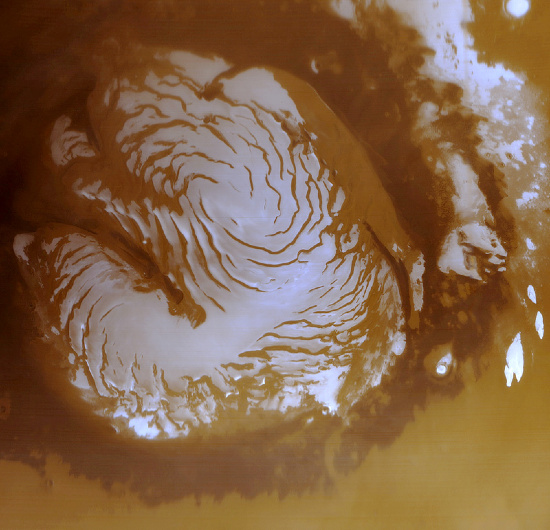How cold is Mars? Now, that is a fine question. The average temperature across the Martian surface is -63 C. Parts of Mars have been known to drop as low as -123 C. There are two main reasons that Mars is colder than Earth: it is farther from the Sun and it has an atmosphere that is too thin to retain heat.
The Martian atmosphere contains greenhouse gases that would cause a much warmer surface if the planet had the gravity and magnetic field that would allow it to hold onto gases. What little atmosphere(only 1% as thick as Earth’s) that clings to Mars is 95.32% carbon dioxide. As we know from experience here on Earth, higher amounts of CO2 cause higher temperatures. We call it a greenhouse gas and blame global warming on the increase in these gases. If Mars could hold its carbon dioxide content, there would be runaway global warming across the planet.
The gravity on Mars is only 38% as strong as it is here on Earth. That low gravity allows many of the gases needed to retain heat close to the surface to escape into space. The core of the planet is thought to be solid. Without a spinning, molten core Mars is unable to generate a magnetic field. Without a magnetic field, the solar wind and radiation constantly bombard the Martian atmosphere, blowing away another portion of the gases needed to heat the planet.
There is evidence that Mars has not always been a frigid planet. Some probe instruments on the Mars Express suggest that at one time Mars was warm enough to support liquid water. A radar instrument has found water ice, a mineral mapping instrument discovered chemicals only formed in a wet environment, and a camera has shown features formed by running water. The Mars Advanced Radar for Subsurface and Ionospheric Sounding (MARSIS) has probed down to thousands of meters finding water ice along the way. The OMEGA Visible and Infrared Mineralogical Mapping Spectrometer has detected clay-like minerals that form during long-term exposure to water, sulphates(a mineral that forms when water evaporates), and ferric oxide. Each indicate the long term presence of liquid water on the surface. Images from the High Resolution Stereo Camera(HRSC) show features that could only be formed by erosion from flowing water.
The quick answer to ”how cold is Mars?” is -63 C on average. If you look into the contributing factors of that temperature, you must also look into the planet’s past. Some scientists think that Mars could have been a lush jungle like planet if it had not lost its atmosphere.
How cold is Mars? Read this article and learn that Mars is REALLY cold. And evidence that Mars has been cold for billions of years.
More information on Mars is available Hubblesite’s News Releases about Mars. Here’s an article from Space.com about how microbes can survive cold temperatures, maybe even some day on Mars.
Finally, if you’d like to learn more about Mars in general, we have done several podcast episodes about the Red Planet at Astronomy Cast. Episode 52: Mars, and Episode 91: The Search for Water on Mars.
Sources:
NASA Solar System Exploration Guide
NASA Mars Fact Sheet

